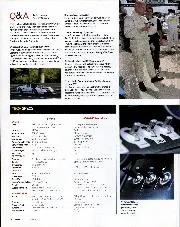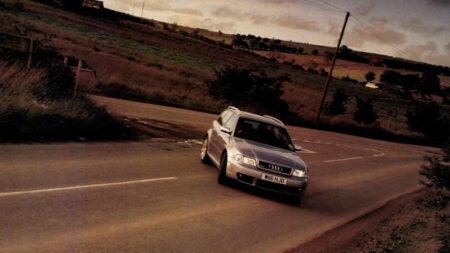Sometimes the best plans just don’t work out. I’d been invited to Donington to test a Revolution SC500, an open sports racer created by Phil Abbott who had founded Radical a quarter of a century ago. But I wanted another angle, a way of explaining to you how fast racing cars are today even when they’re merely rather expensive (£160,000 with all the trick bits) rather than completely out of sight.
And it happened that Nick Padmore would be at the very same test, at the wheel of a 1970s historic F1 car. I wondered which would be quicker, realised I had no idea and thence came the idea: test the Revolution and the F1 car together and see not just which was quicker, but where. Both had around 500bhp; the F1 car would be lighter than the 800kg Revolution, but have a fraction of the downforce. I thought it could be quite close.
So did Padmore when we compared his best times in an F1 car to those of Revolution’s test driver. But the owner of the F1 car would only let Nick drive, and without being able to say I’d done what I was writing about, we had no story. And that was that. Nor do I blame the owner: if I had a 1970s F1 car I’d be pretty proscriptive about who drove it too.
Which meant I’d only drive the Revolution, not that this was a hardship. Five hundred horsepower in a carbon tub slicks and wings racer weighing less than a Fiat Panda is unlikely to be boring. But for all that power, there is so much grip the Craner Curves are a mere acceleration zone, the car kissing the apex of the blind entry downhill corner at 148mph pulling approximately 2.5g lateral. At least with James Abbott, Phil’s son and said test driver, at the wheel. Me? I was too scared to see what a coward I’d been to ask.
“Jackie Stewart would have been a real whizz with data”
Because it is of course all there for you to see. Every turn of the wheel, stab at the throttle, prod of the brakes turned into multi-coloured lines, spilled across the width of a computer screen. And without hours spent analysing such data, your chance of turning in a competitive lap time in such a car is essentially zero. I know someone who has been a frequent competitor in GT3 who says over the course of a weekend he’ll spend more time with the data than driving the car.
Which is fine as far as it goes and is, actually, more likely to benefit an enthusiastic amateur racer like me than a full-time professional, because he or she won’t be doing much wrong in the first place. Whereas with me… A couple of years back I came second in a McLaren GT4 race at Spa having been the slowest in the field in free practice two days earlier. Thanks to the data, I had literally learned how to go faster, which was interesting and rewarding – but actually and ultimately I’d rather have spent the screen time in the car.
But all this data talk did make me wonder how different the history of motor racing might have been had it always existed. Which drivers would have made the most of it, and who would have dismissed it saying they don’t need to be told what they’re doing because they already know?
I may be doing them an enormous disservice, but I can’t see drivers like Mike Hawthorn or Innes Ireland having a lot of time for data. However, Sir Jackie Stewart would, I am sure, have been an absolute whizz at it which would only have made him even more dominant. James Hunt and Ronnie Peterson? I don’t think so. Niki Lauda and Alain Prost? You bet.
But who’d have done best with it? Probably Stirling, and for two reasons. First he was one of the first drivers, perhaps the first, to take a wholly professional approach to the business of motor racing, which combined with his God-given talent made him close to unbeatable on a level playing field. Secondly, he was fascinated by technology. He loved new kit, whether it was on his racing car at the track or in his home in London. I can quite see him recognising at once the benefit it brought – the ‘unfair advantage’ as Mark Donohue would have put it – and striven to exploit it to the maximum. Given how often he got so close, it would have probably won him some titles too.
I note that the Texas company which owns the name is starting to tease a new DeLorean. Called the DeLorean EVolved, all we know is that it will be an EV as the name suggests and that the iconic gullwing doors will be retained. I usually groan at such exhumations, not least because so few make it across the bridge to reality but actually, I think this one has a chance.
First, with modern EV ‘skateboard’ design you can buy a complete powertrain and platform off the peg and simply reclothe it, decimating the time and cost of engineering your own units. Second, and thanks entirely to an enduringly popular film franchise and not at all to John Z DeLorean, the brand remains front and centre in our minds over 40 years after the last one was built. Finally, and crucially, the old one was rubbish meaning there’s not even much of an act to follow, let alone impossibly big shoes to fill. If it’s merely reasonable by the standards of the competition it will already have achieved far more than the original ever did.
A former editor of Motor Sport, Andrew splits his time between testing the latest road cars and racing (mostly) historic machinery
Follow Andrew on Twitter @Andrew_Frankel





